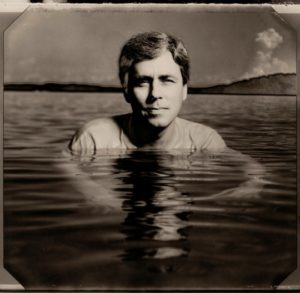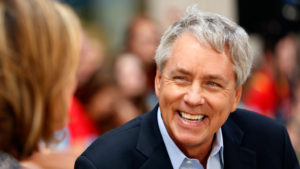Nature Boy
Appeared in Creative Loafing, September 2010

If we want to erect a statue of the species “Florida Writer,” chances are the figure on the pedestal would look an awful lot like Carl Hiaasen.
There are a number of great Florida writers working today, but ever since that sad day when John D. MacDonald slipped off the mortal coil, the crown of pre-eminent Sunshine State novelist has belonged to Hiaasen.
His new book, Star Island is Hiaasen in top form – which is to say it’s business as usual. The guy makes no missteps in his writing. He probably came out of the womb with wit and syntax intact. Read his books with a pencil handy, just to see if you can find a flaw.
Good luck with that.
It won’t happen. Star Island is another masterfully told tale of Florida mayhem, with lines that will have you calling friends to read them aloud.
 Seriously. I still recall phrases from Hiaasen’s books of 20 years ago that make me howl with laughter. When people talk about his work, they talk about the many tiered plots or the bizarre ways he employs to kill the bad guys in his books. There’s not enough attention paid to the craft of his writing. A Hiaasen book is a delight – like a delicate soufflé, in which everything is perfect. But the underlying seriousness of his stories aren’t light, like desserts, but carry the gravitas of a seven-course meal.
Seriously. I still recall phrases from Hiaasen’s books of 20 years ago that make me howl with laughter. When people talk about his work, they talk about the many tiered plots or the bizarre ways he employs to kill the bad guys in his books. There’s not enough attention paid to the craft of his writing. A Hiaasen book is a delight – like a delicate soufflé, in which everything is perfect. But the underlying seriousness of his stories aren’t light, like desserts, but carry the gravitas of a seven-course meal.
In that way, he’s similar to his friend and colleague, Dave Barry. Both of them write with such grace that their work appears effortless. It can appear so only because so much effort was spent. (Barry is said to rewrite his column on average 30 times before submitting it to an editor.)
Hiaasen started writing almost the moment he left the womb. He got his first typewriter before he started first grade, when he figured out that there were people who walked the earth who earned a living by watching baseball games and writing about them. But the sportswriter fantasy did not last long.
Early on, Hiaasen saw what was happening to his boyhood paradise. Even as a teen-ager, he became enraged seeing bulldozers mow over his beloved swamps and fields and vowed to do something about that murderous technology.
What he did, as a grown-up, was become a journalist. He saw the bad guys winning and he wanted to stop it. That didn’t always work, so he turned to writing fiction, where he was in control.
In his fiction, the bad guys not only lost, they often suffered horrifying punishments handed down by God Hiaasen – in one case, a villain was raped by a bottlenose dolphin. What a way to go.
After a distinguished career as a reporter for the Miami Herald, Hiaasen was offered a position as the paper’s metropolitan columnist. It was as if life was imitating art-in-progress. At that moment, Hiaasen was writing his first solo novel (after ghostwriting and three collaborations), which was called Tourist Season. In that book, a Miami newspaper columnist, tormented by the systematic rape of the Sunshine State, turns into a murdering terrorist.
 And that was his first book. He picked it up from there.
And that was his first book. He picked it up from there.
In the 25 years since Tourist Season, Hiaasen has gone from a regional novelist, to a cult favorite (fans including the Grateful Dead and Warren Zevon), to a reliable national best-seller.
Several years back, he decided to take his message to the younger generation and has so far published three young-adult novels. Hoot, the first, was close to the bone, nearly drawn from his childhood. There was a feral child in that book, a running boy, who was most likely based on Hiaasen’s doomed childhood friend, Clyde Ingalls.
As an eco-evangelist, it makes sense for Hiaasen to educate the younger generation about being good caretakers of the planet. But for us grown-ups, we’ve missed the full-bore Hiaasen we haven’t seen since his last adult novel, Nature Girl, in 2006. (He also published a best-selling memoir of his career as a mediocre – at best – golfer.)
Star Island is a superb novel. Longtime fans will appreciate the reappearance of two of Hiaasen’s classic characters.
First, the villain Chemo makes a comeback. He showed up in Skin Tight, nearly 20 years ago, and had his hand bitten off midway through the novel. In that book, he attached a prosthetic Weedwhacker ™ and continued on his larcenous ways.
Second – and most importantly – Skink is back. If you’ve never read a Hiaasen novel, then this character requires explanation.
Once, his name was Clinton Tyree. He was a war hero elected governor of Florida who set out on a campaign to jail every crooked developer and politician in the state. When he saw the confederacy of dunces facing him, he ran amuck and went underground. As “Skink,” the former governor, has been a prolific dispenser of eco-justice.
This time, the plot revolves around a Britny-like pop tart named Cherry Pye. She’s spoiled, untalented (she lip synchs, doesn’t sing) and addicted to anything that gets her high. Because of her erratic nature, her stage-manager-mother hires a body double. That body double ends up running into Skink, and the former governor – who lives off of roadkill on U.S. 1 – falls in love.
Skink, we should note, was also based on Ingalls, Hiassen’s friend who committed suicide at 17. Ingalls killed himself rather than see his childhood plowed over by a backhoe, so what Hiaasen took from his friend in creating Skink, the renegade governor, was “his uncompromising way of looking at the world,” and “not the running-for-governor part,” Hiaasen told the Los Angeles Times.
Chemo comes into the story as the pop tart’s bodyguard and he dispenses his own kind of justice. He’s done time since the last time he made an appearance in a novel, and while in the stir he became serious about grammar. Now, he torments Cherry Pye. Every time she uses the word “like” as an interjection and not as a verb, he blasts her with a cattle prod.
Only in a Hiaasen novel would you find a sadistic, self-taught grammarian with a prosthetic set on “maul,” who shoves a cattle prod into the groin of language morons.
It’s one of those things that makes Hiaasen’s books so delightful. You’ll want to read Hiaasen’s one liners and his dialogue aloud to friends.
Once again, Hiaasen shows again his gift for blending the sacred and the profane, weaving a dead-serious-apocalyptic theme around a comic tale worthy of the best absurdist. It’s a laughing-to-keep-from-crying approach to the world.
